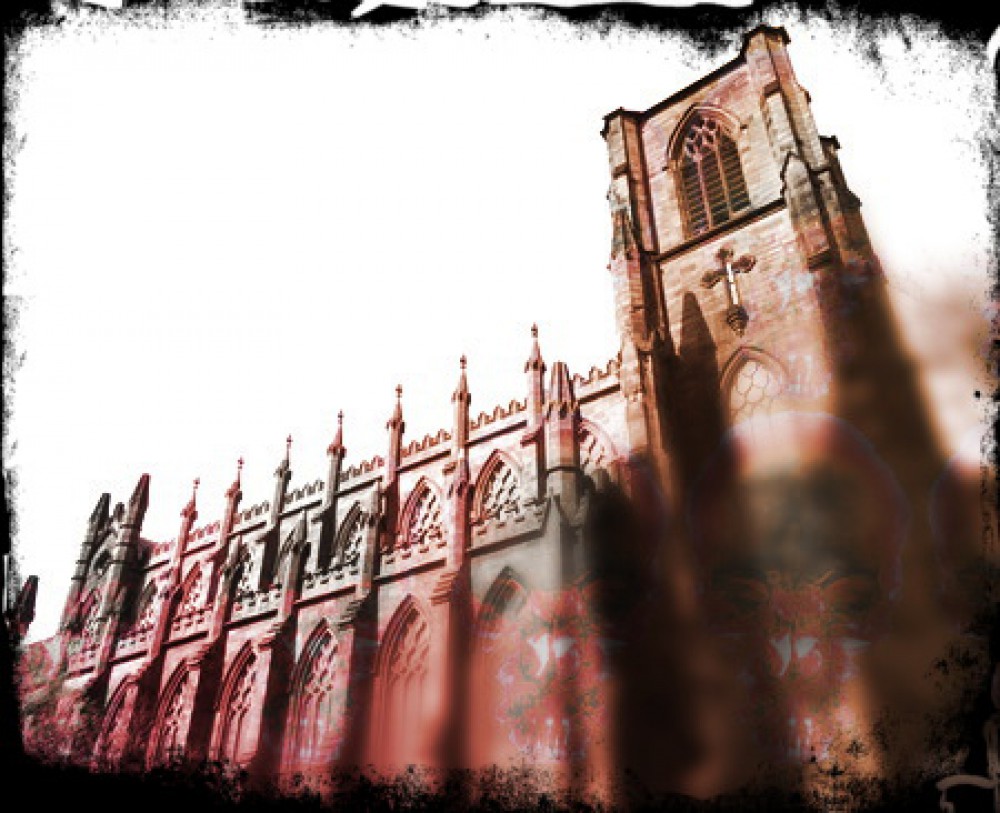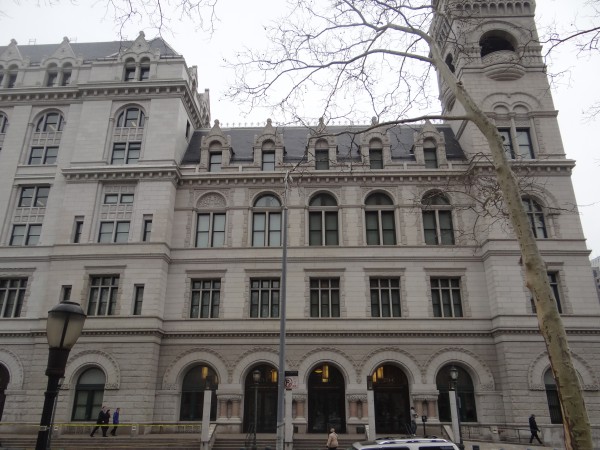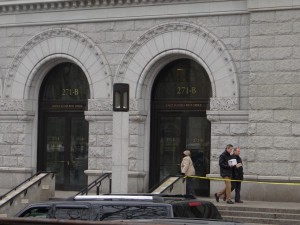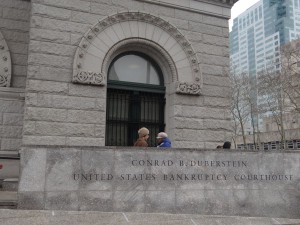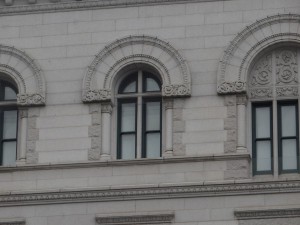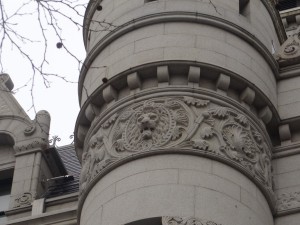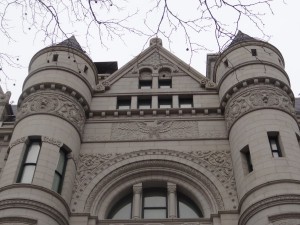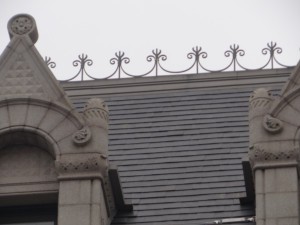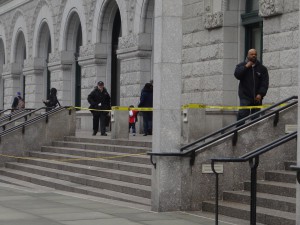Today, as part of a special feature on New York, I will be sharing some of my experience from my travels through the city of New York hunting for all things Gothic. New York, notorious for being the city that never sleeps or The Big Apple, where there is a little bit of everything for everyone. As part of this feature, I will be presenting a Gothic location in New York, talk about my experience in my travels to this location and highlight the features of this location that make it Gothic. The location that I visited is the Conrad B. Duberstein Building, which I have a little bit of a fun history with.
Anyone that isn’t acquainted with this building in some way wouldn’t know what to make of it. Is it a court? A post office? Some weird castle in the middle of Downtown Brooklyn? Or the lair of some creepy twisted old man? For the past three years I didn’t know what to make of this place. I saw it for the first time, during freshman year, through a window and I found it so odd that in the middle of all the nice, paneled modern buildings we have all over Downtown Brooklyn there was an old castle. I sincerely thought that the building was a real, bona fide castle, like the ones found all over Europe. I asked many people over the years about the building. I received various responses. Some said it was a court, others said it was a post office location, and there were some who thought that it was an abandoned building or some rich person’s mansion. So I took it upon myself to discover the nature of this building.
The Conrad B. Duberstein building, which is located on 271 Cadman Plaza East, is home to the Kings County U.S. Bankruptcy Court (271-C) and The Downtown Brooklyn U.S. Post Office location (271-B). Erected in 1885, this iconic castle-like building has been a part of the Downtown Brooklyn area for 130 years now. This building, with its intricate carvings and its imposing presence, has been a New York City Landmark since 1966 (GSA.org).There have been several renovations that have been done, and it has gone through the hands of several owners, making it an exquisite blend of the old and the new, the past and the present. The building’s architectural style is not Gothic, but rather Romanesque Revival, which is a twist on Roman Architecture.
However, this castle-like building, with its barred windows, intricate arches, lion carvings and subterranean passages takes me right back to Count Dracula’s castle. As I explored the surrounding area of the building and explored the areas that were open to the public within, I experienced a certain discomfort and anxiety that constantly morphed with each and every visit. When Jonathan Harker explores Dracula’s castle he says that there are “Doors, doors, doors everywhere, and all locked and bolted. In no place save from the windows in the castle walls is there an available exit. The castle is a veritable prison, and I am prisoner!” (Stoker 2).
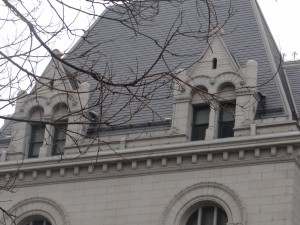
The arches and spires of the top floor windows of the Bankruptcy Court (which also have the lion motif)

The windows of the Post Office are mostly rectangular in shape and very modern in appearance. No intricate details
As I explored the interior of the building, I felt a bit imprisoned with all the barred windows and locked doors of the various courtrooms. However, as I entered the post office, I didn’t feel get same feeling. But the considerate state of disarray and the lack of cleanliness and organization create an atmosphere of decay and gloominess as you wait to go about your business there. This gloominess is also present in the atmosphere of the court, along with a sense of austerity, since this is a place that deals with a lot of tragedy, misery and hardship as people go through the experience of being bankrupt and lose everything. Even though the court’s halls are populated, and people are rushing through to get their things done, there is a heavy and imposing silence all throughout.
Since the first time I saw this building, it has been an object of curiosity for me, because I didn’t really know what it was. However, by the same token, I had accepted that it was a gorgeous castle like structure and I thought that chances were it was a museum or some kind of tourist attraction. But as I went through this series of visits, slowly, this building went from being perceived as a potential tourist attraction, to being a bankruptcy court, and then a post office. With each visit, I went with a perception about this place, and left with it being replaced by another. Every visit became a process of thinking it to be familiar and realizing that it is not. This feeling, of the known becoming the unknown is described by Sigmund Freud as “The Uncanny”. In Freud’s essay The Uncanny, he defines this feeling as “that class of the terrifying which leads back to something long known to us” (220). For me, this building created an uncanny experience because every time I was secure in the knowledge that I had of what it was, I found out that it wasn’t really what I thought it was, that it is something else entirely. The building is not really any of the above, but rather a hybrid that serves multiple purposes. The building is all of the above. It is a tourist attraction, a landmark, a court, a post office and a castle in the middle of a metropolis.
This is a place that has a little bit of everything for everyone, just like its home. It’s got History, Notoriety, Purpose, Aesthetic (for art lovers), and its own brand of Gothic. As it is, There is even death in this place. The death of stability, wealth, tranquility and of some of the people who experience this transition.
This, I dedicate with special care and gratitude, to Professor Judith Cox, who had a love for this place and all it stood for and whose knowledge of Bankruptcy was so extensive that it was a pleasure to be her student. May she be at peace now.
